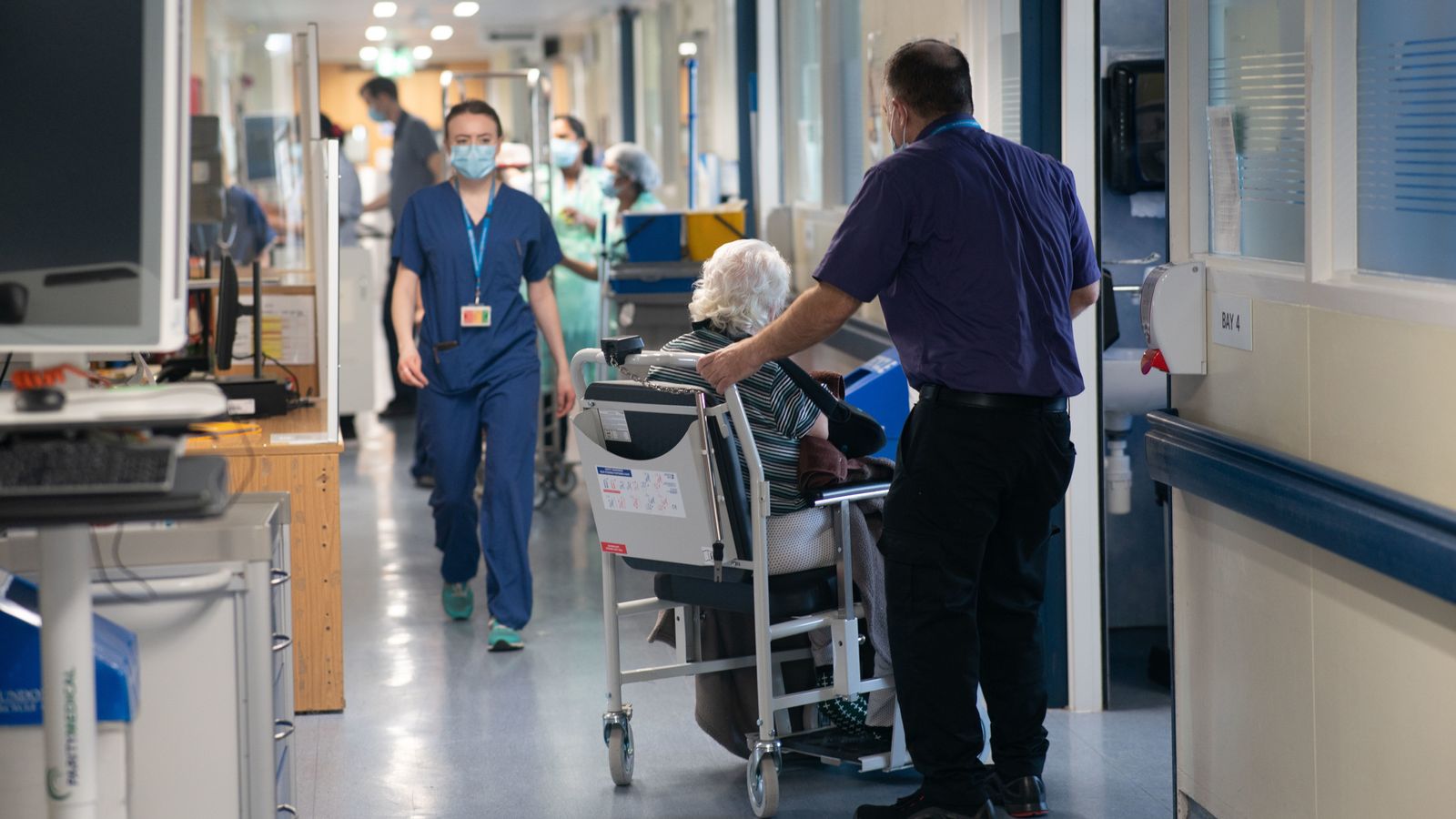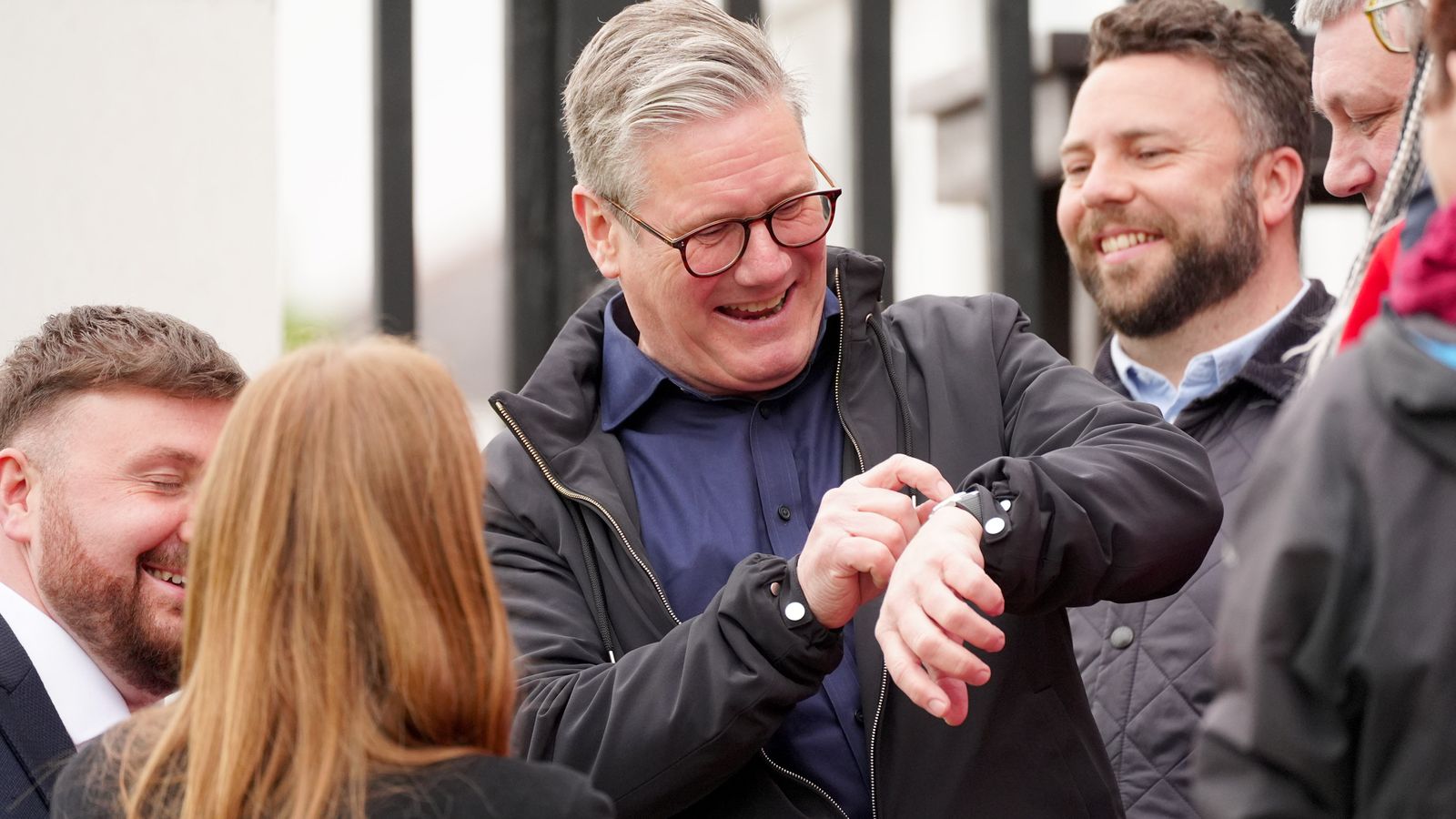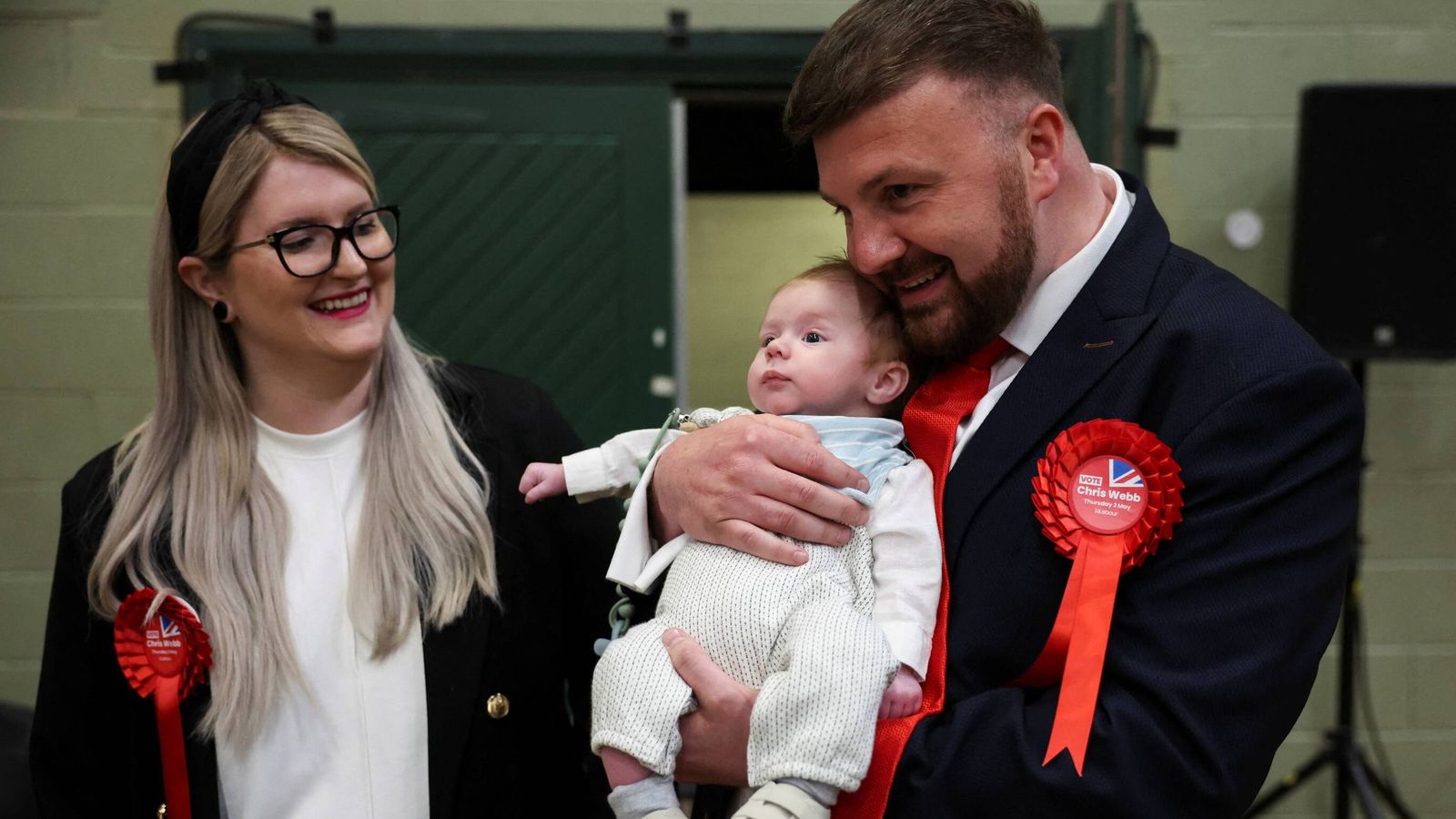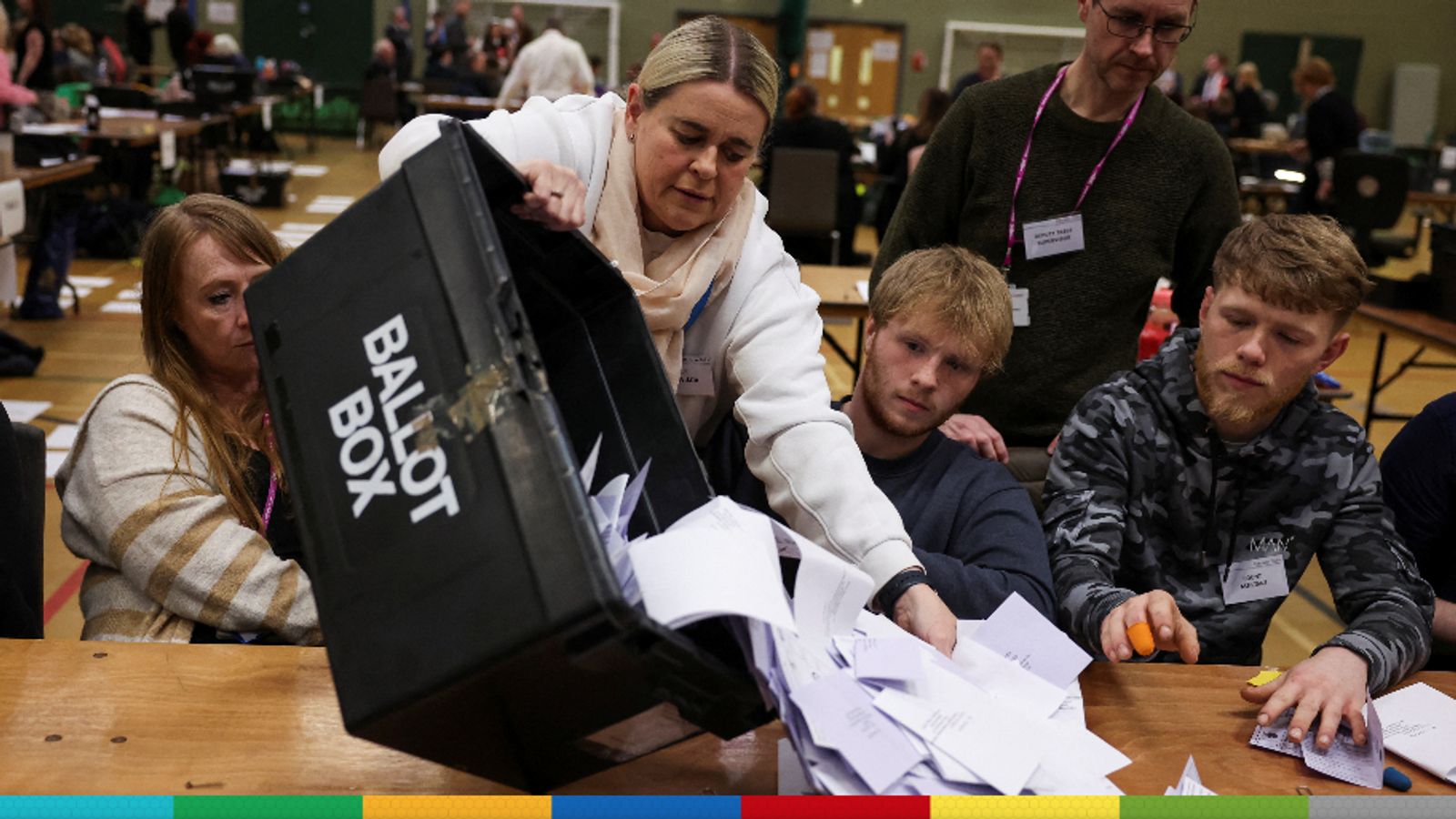
Ministers are aiming to more than halve the number of NHS staff being recruited from abroad in the next 15 years, according to the government’s long-term workforce plan.
On Thursday, a preview of the plan announced the intention to funnel £2.4bn into solving the severe staffing crisis in NHS England.
The full document, which was published this morning, said the service aims to train more NHS staff domestically to “reduce reliance on international recruitment and agency staff”.
Politics latest: ‘Hugely important day for NHS’, minister says
“In 15 years’ time, we expect around 9-10.5% of our workforce to be recruited from overseas, compared to nearly a quarter now,” the NHS plan said.
Are you an NHS worker thinking of leaving your job? Share your story with Sky News via Whatsapp or email
The report also says:
• Half a million trainees will begin clinical training over the next six years
• The NHS hopes to recruit 300,000 new staff and retain 130,000 extra healthcare workers
• Training places will be expanded across the sector including: GPs (50%), adult nurses (92%), pharmacists (29%), dentists (40%), dental therapy and hygiene professionals (28%), healthcare scientists (13%)
• From autumn, recently retired consultant doctors will be given the option to return to work across England through the NHS Emeritus Doctor Scheme
• Almost a quarter of NHS staff (22%) will be trained via apprenticeship by 2031/32
• New medical degree apprenticeships will train 2,000 doctors by 2031/32
• Staff will be supported to access the new childcare measures announced in the recent budget
• The shortfall in mental health nursing is of “particular concern”, with plans to boost this by 73%
NHS ‘reliant on overseas staff’
The NHS, the report said, is “particularly reliant on international recruitment” to fill workforce gaps. The total proportion of NHS workers with non-UK nationalities – across all professions – has grown to more than 17%.
Since 2017, there has been a 2% increase in UK-trained medical graduates joining the workforce. By comparison, in the same time period, there has been a 121% rise in international medical graduates.
Of the doctors who joined the UK workforce in 2023, 50% were international medical graduates.
And, in 2022/23, about half of new nursing registrants in England were trained overseas.
“This leaves the NHS exposed to high marginal labour costs and risks the sustainability of services in the longer term given the growing global demand for skilled healthcare staff,” the report said.
But achieving the productivity improvements outlined in the plan is depending on ” a sustained increase in capital investment in the ageing NHS estate” and investing in digital infrastructure to allow the NHS to make the most of new technologies.
This includes replacing equipment that has passed its recommended lifespan and expanding “capacity to accommodate the increased demand for healthcare from an ageing population”.
“This would enable staff to function more efficiently, and shorten diagnosis and treatment times in areas such as cancer,” the report said.
New roles will be ‘trained and regulated properly’
Vacancies currently stand at 112,000, and there are fears shortfalls could grow to 360,000 by 2037.
The plan, along with new retention measures, could mean the health service has at least an extra 60,000 doctors, 170,000 more nurses and 71,000 more allied health professionals in place by 2036/37.
Shorter medical degrees, apprenticeships so staff can “earn while they learn” and more medical school places in the areas of greatest need were among the previous headline announcements.
The prime minister has insisted people being brought into new roles in the NHS will be “trained properly and they’ll be regulated properly”.
Rishi Sunak said the General Medical Council (GMC) will bring new roles like physician associates into its remit as regulator.
As the Conservatives have now been in power for 13 years, critics – including Labour’s shadow health secretary Wes Streeting – have been asking why the party hasn’t acted sooner.
He said governments from all parties had “ducked” the workforce challenge for decades but said “overcoming this won’t be quick or easy”.
He added: “It’s only possible because of the difficult decisions we’re taking elsewhere to cut the debt and by prioritising the NHS there will be other things that we can’t afford.
“But the NHS is too important. So we’re making the tough calls, and doing things differently, to protect the long-term future of the NHS and this country.”
No mention of pay
And while the plan focuses on retention and training, as waves of strikes continue across the health service, the preview contained no mention of pay other than to say: “Everyone working in the NHS should be recognised and rewarded fairly to help ensure we attract and retain the staff we need to provide the best possible care for patients.”
In response to questions about this, the prime minister said everyone would like to be paid more, but the government’s job is to “make sure that we reward people fairly and well for the work they are doing” but also bring down inflation.
He said he is “really pleased” the NHS staff council, which represents over a million NHS workers, voted to accept the government’s pay offer, adding: “I think they did recognise that it was fair and reasonable and rewarded their members for their hard work.
“And I’m very grateful to all them for doing that because I know that fundamentally what they care about is working really hard, to deliver excellent healthcare.”
Unite General Secretary Sharon Graham said: “This looks like a bold plan to transform the training of new staff in the NHS. But the devil is in the detail as usual. There is a promise of funding for training for three years, but nothing about money for current staff.
“If there is not enough money to pay NHS staff a decent wage now, and transform current wage structures, then all the aspirations for more staffing in the training plan will fail to address the current crisis in the recruitment and retention of staff. That is what is at the heart of the current staff exodus”.











